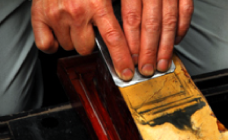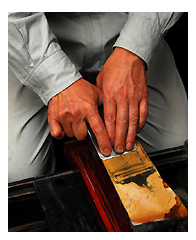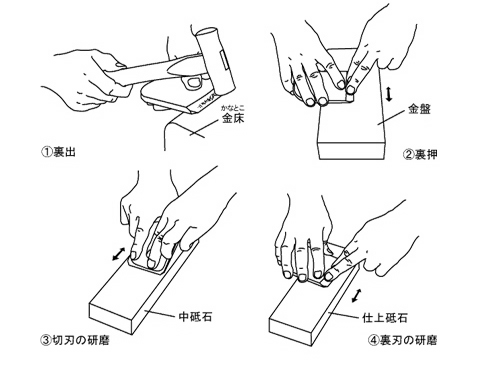Miscellaneous Tools [Zatsu-dougu]
Sweeping
Sweeping


It is called betraying the state where the cut blade of the plane blade is polished and the flat sliding surface of the back cutting edge is lost, and the creation of a flat sliding surface at the back cutting edge is called Uradashi (1). In addition, polishing the plane to the smooth back of the blade using a metal plate and Kongo sand is called the back of the plane (Uraoshi). If the back cutting edge does not hit the metal plate evenly during the back pressing process, perform the backing. When sharpening the cutting blade, firmly grasp the plane body with the right hand, attach the left hand, and attach the cutting blade to the whetstone surface. The cutting angle is adjusted to approximately 30° using rough and medium grindstones (3), but it may be slightly sharp angles for soft materials and slightly dull angles for hard materials. If there is a roughness on the back of the blade, use a finishing grinding wheel to sharpen the front and back of the blade alternately until there is no change.

①Backside Kanatoko 2 Back bracket 3 During polishing with cutting blade 4 polishing grinding grindstone with back blade 4 polishing grindstone with back blade
Special Exhibition
Permanent exhibition